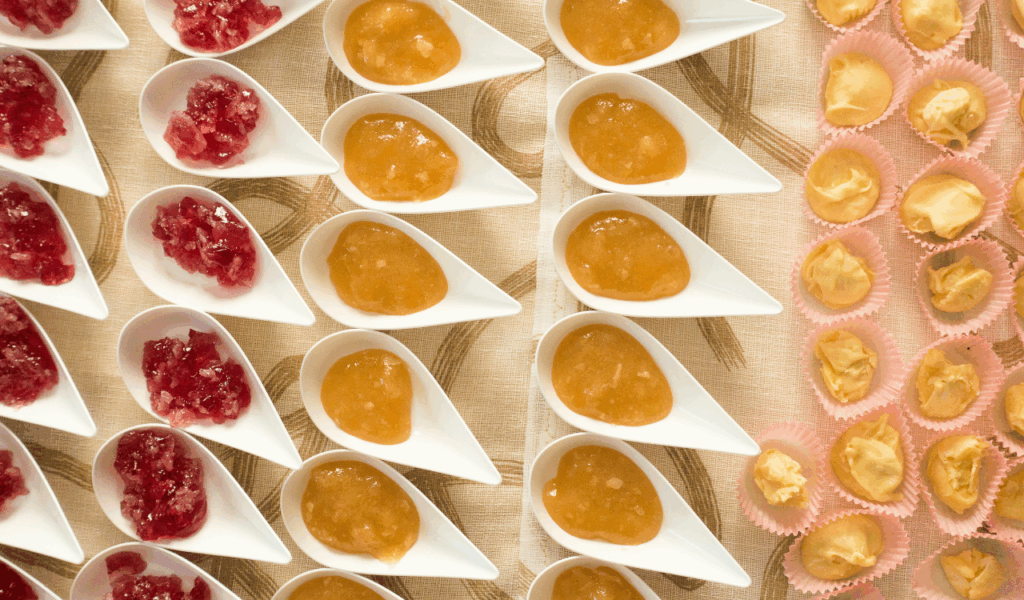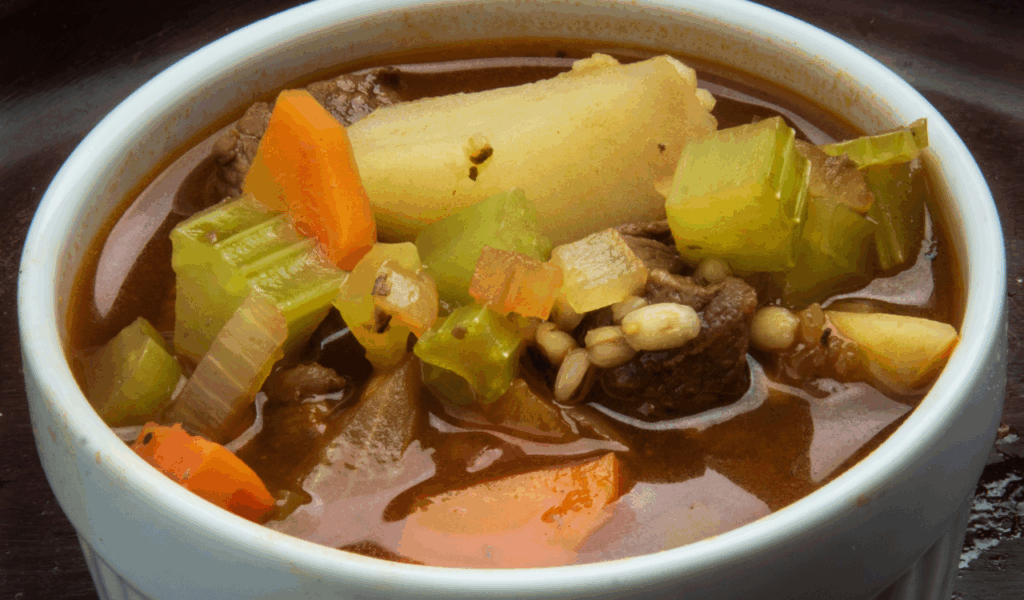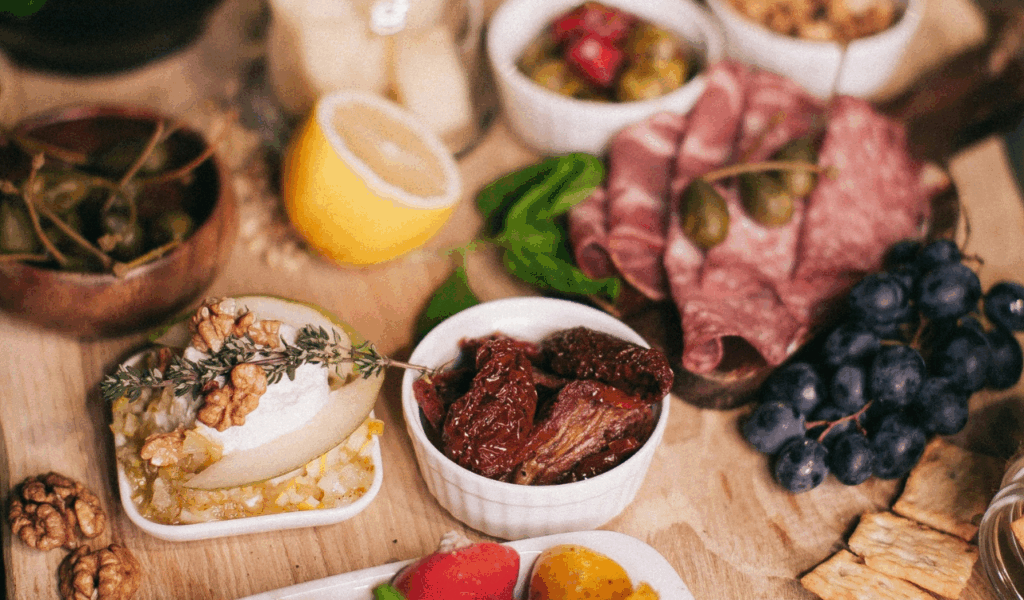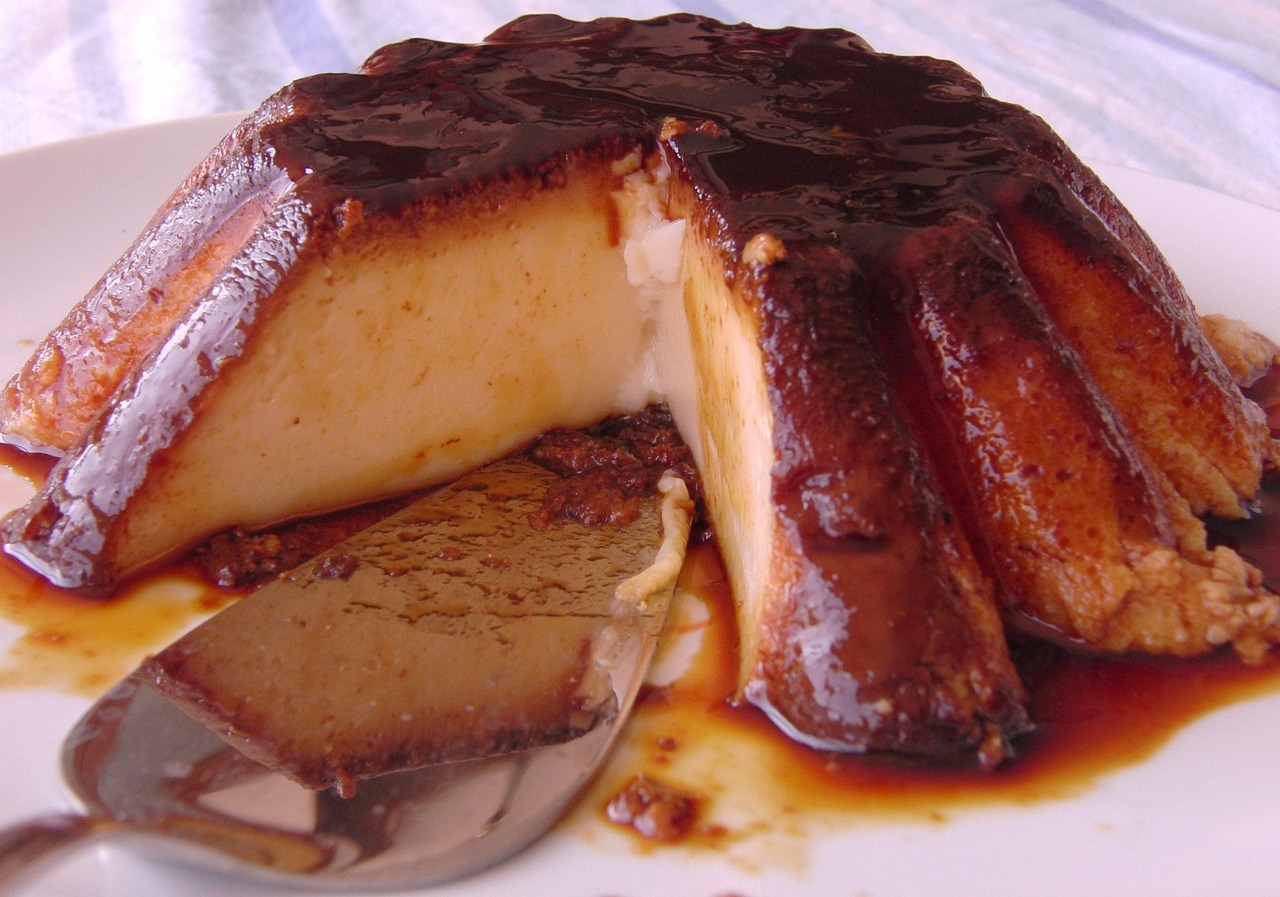14 Foods That Were Once Beloved But Are Now Forgotten

Food is more than just fuel; it’s a plate of culture, history, and 9nostalgia. Once-popular foods in homes, restaurants, and social settings frequently reflect what was accessible, reasonably priced, fashionable, and well-liked by the general public. The popularity of many of these foods declined over time as those factors—ingredients, health priorities, global influences, supply chains, and convenience—shifted. This article examines 14 foods that were once popular but are now infrequently found. I’ll discuss what made each unique, why they vanished from view, and what echoes are still present. The stories are fascinating, regardless of whether you were raised with these or have only heard rumors about them. Let’s revisit what we’ve lost as we journey through culinary memory.
1. Aspic (Savory Gelatin Molds)

Aspic is a term used to describe savory dishes in which meat stock, which is frequently flavored and clarified, is transformed into gelatin and used to hold together meats, seafood, vegetables, or eggs in ornamental molds. In the early to mid 20th century, aspic was prized for its visual elegance and for showing a host’s skill. It was served at formal dinners and banquets, particularly when presentation and texture were important considerations. However, a number of factors contributed to its decline in popularity: many people started favoring warm, fresh foods over cold, jellied ones; aspics’ flavor profiles can seem too subtle or bland to modern palates; and in some countries, gelatin is associated with processed or artificial foods, which turned people off. Making a clear, delicious stock, purifying it, molding it, and then keeping it cold until serving makes it somewhat labor-intensive as well. Nowadays, aspic is more of a curiosity than a common food, though it may be found in some traditional cuisines or at heritage cooking classes.
2. Gelatin Salad (Jell‑O Salads)

Fruit pieces, occasionally vegetables, nuts, or even savory bits are combined with flavored gelatin, also known as “Jell O,” to create colorful and entertaining gelatin salads. They were extremely popular in the middle of the 20th century because they were affordable, simple to make, eye-catching, and festive—bright colors and suspended fruit seemed fresh and contemporary. They were used by families for picnics, potlucks, and holidays. But as time went on, tastes changed, and people started to be suspicious of artificial flavors, vivid colors, and overly sweet dishes. People started looking for fruits in their whole form instead of suspended in sugar-rich gelatin as nutritional science advanced. Natural ingredients, less processed sugar, and more texture were highlighted in health trends. Additionally, not everyone enjoys the slick, wobbly texture of gelatin, particularly younger diners or those who are not familiar with it. As a result, gelatin salads are no longer commonly found in everyday family meals but rather in vintage recipe books or at special occasions.
3. Liver and Onions

A common meal in many homes used to be liver (from beef, chicken, lamb, etc.) cooked with onions. In comparison to prime cuts of meat, it was reasonably priced and provided high levels of iron, vitamin A, and B vitamins. Liver was not subtle due to its strong flavor, slightly metallic undertone, and unique texture, but many people enjoyed its robust taste, especially in earlier cooking traditions where eating organ meats was common. However, over time, a number of factors contributed to liver’s decline in popularity: shifting preferences toward milder meats; worries about cholesterol (although current research complicates this issue); a lack of cooking skills (liver needs to be cooked carefully to prevent toughness or a grainy texture); and the belief held by many younger eaters that liver is “off flavor” or too unusual. Nowadays, liver is typically found in pâtés, specialty dishes, or among those who are interested in nose-to-tail cooking or the resurgence of traditional cuisine in many places. It is rarely prepared as a typical weeknight supper.
4. Waldorf Salad

Traditionally made with apples, celery, walnuts, and occasionally grapes, the Waldorf salad was created in the late 1800s and dressed with mayonnaise or a mild, creamy dressing. It was sophisticated, uncomplicated, and revitalizing—a crunchy, creamy link between salad and fruit. It gained popularity as a side dish for dinner or as a luncheon food in homes, hotels, and restaurants. However, it became less popular as dietary trends and taste preferences changed over time. The fat and calorie content of mayonnaise-based dressings were questioned; consumers also favored lighter dressings, vinaigrettes, or yogurt-based alternatives. Many younger diners who prefer exotic ingredients, spicy dressings, or fusion flavors find the fruit + nuts + cream flavor combination to be outdated. Additionally, people who prefer a consistent texture might not enjoy the texture contrasts (crunchy celery + crisp apple + creamy dressing). Although Waldorf salad isn’t as popular in everyday cooking as it once was, it still occasionally shows up in retro menus, nostalgia-themed dinners, and among fans of classic cuisine.
5. Fruitcake

Once a holiday mainstay in many cultures, fruitcake was made with candied fruit, nuts, and occasionally alcohol. It represented plenty, adorned tables, and traveled as gifts. It was perfect for celebrations when fresh fruit was scarce because of its richness and long shelf life. But a lot of people started to dislike fruitcake because of its excessively “candied” fruit bits, heavy texture, sweetness, and occasionally dry crumb. In some places, the custom of giving fruitcake turned into a joke, with recipients receiving it but hardly ever eating it. Fresher textures, lighter cakes or pastries, and simpler ingredient lists are preferred in contemporary dessert trends. Additionally, the demand for heavily preserved fruit decreased as it became simpler to import or grow fresh fruits, even exotic ones. Fruitcake is rarely a dessert that is regularly rotated, but for many families, there is a sense of tradition and nostalgia in baking or eating it at particular times of the year.
6. Salisbury Steak

Originating in the late 19th century, Salisbury steak—ground beef patties that resemble steak and are typically served with gravy, onions, and mushrooms—became particularly well-liked in the dining and frozen food aisles of the mid-20th century. It was a way to stretch meat by using ground beef and adding gravy for moisture, and it had a hearty, comforting flavor. However, Salisbury Steak lost popularity as consumers’ tastes shifted toward gourmet burgers, fresh meat cuts, and foreign flavors. Concerns regarding processed meat, fat content, gravy mixes (often from packets or processed bases), and the deteriorating flavor standards in frozen versions also played a role. Nowadays, a lot of people favor cooking from scratch, cleaner seasonings, or fresher meat. Although some frozen food brands and classic diners still serve Salisbury steak, many people no longer consider it when making meal plans.
7. Chipped Beef on Toast (SOS)

A dish of dried, salted beef (typically preserved or mildly smoked) that has been rehydrated in a creamy sauce (typically made with milk or cream) and served over toast is known as “Chipped Beef on Toast,” or “SOS” (a slang term of unknown origin). In earlier decades, it was common in homes and institutional settings like military mess halls or cafeterias because it was inexpensive and filling. However, it is no longer as popular due to its heavy sauce, preserved meat base, strong salty flavor, and dependence on processed ingredients. Fresh meats, lower levels of sodium, cream, and processed foods are key components of many contemporary diets. Additionally, there isn’t much contrast or freshness to the dish’s texture (soft toast sauce combo). Because of this, this dish is now mostly historical or nostalgic and only occasionally seen by people who have recollections of it or by some traditional diners. Instead of appearing on menu boards or dinner plans, it is more likely to be mentioned in a list of “nostalgic meals.”
8. Mulligan Stew

In essence, Mulligan stew is a versatile “whatever is on hand” stew that is made by combining leftover meat scraps, root vegetables, herbs, and occasionally legumes with stock and simmering them. This was originally a mainstay during periods of scarcity, such as the Great Depression or family pantries in rural or frontier areas. It was resourceful and economical because it made use of leftovers. However, people started cooking more assembled or carefully planned meals as supply chains improved, supermarkets carried a greater range of ingredients, and refrigeration and better storage made waste less of an urgent issue. Additionally, recognizable ingredients are frequently preferred over mystery mixes in contemporary taste. There are still stews, of course, but the concept of making a stew entirely from leftovers is less popular; instead, people use recipes rather than “clean out the pan” improvisation when planning stews. Mulligan Although stew isn’t a staple in many people’s cooking repertoires, it is still a cultural touchstone or a meal prepared at home while camping.
9. Corned Beef Hash

Corned beef hash is made by frying corned beef (usually canned or preserved), potatoes, onions, and occasionally bell pepper until they are crispy. It became popular as a filling breakfast or brunch choice in many homes and restaurants, particularly as a way to use up leftover corned beef from holiday meals. However, the popularity of this dish has decreased as fewer people prefer fresh, lean meats or purchase or prepare corned beef. Higher sodium content is frequently associated with preserved meat; eggs, bacon, sausage, fruits, and lighter sides are becoming more common on farmhouse-style breakfast menus. Additionally, the texture (potatoes + lumpy meat) might seem heavy. Despite its continued popularity, corned beef hash is becoming less common on contemporary menus, particularly in areas where fresh meats are preferred or where health regulations are constantly changing.
10. Cheese Balls (Vintage Party‑Style)

Large molded spreads called cheese balls, which are made of cream cheese, shredded cheese, chopped nuts, herbs, and occasionally crackers, were the focal point of social events and holiday parties. They provided a rich, decadent snack, were visually appealing, and were simple to prepare in advance. However, the style of party spreads has evolved over time, and people now frequently favor charcuterie boards, international flavors, fresh vegetables, dipped sauces, individual appetizers, and smaller portions over spreads. Additionally, they have become less appealing due to worries about saturated fat or highly processed bases (some cheese balls use processed cheese or heavy cream cheese). Expectations for flavor have grown; artisan cheese spreads, salsas, and international dips may make plain cheese and nuts seem boring. These days, cheese balls are used more for nostalgic purposes or at parties with a retro theme than for regular entertainment.
11. Deviled Ham (and Similar Canned/Deli Spreads)

Deviled ham is a spread that is made from cooked ham that has been ground or shredded and frequently combined with seasonings, mustard, or spices. Because it was inexpensive, portable, and shelf stable, it was once a common sandwich filling, snack, or appetizer. As consumers’ health concerns grew over the years, processed meats and preserved spreads were closely examined for artificial additives, sodium, and preservatives. Leaner proteins, freshly sliced or cooked meats, and fresh deli meats all became more accessible and valued at the same time. Expectations for texture and flavor have grown, with consumers favoring cleaner, less processed, and less salty spreads. As a result, deviled ham now fills a much smaller niche; most people either never see it in stores or, if they do, they do so more for novelty or nostalgia than for everyday consumption.
12. Mock Apple Pie

Mock apple pie is a clever dessert that mimics the texture and flavor of apples by using substitutes, usually cookies or crackers (like soda crackers) or other non-apple ingredients. It was particularly well-liked in cookbooks during hard times or in locations where real apples were expensive or hard to find. It is inventive and resourceful, and the flavors come from sugar, sweeteners, spices (nutmeg, cinnamon), and alternative base ingredients. People started to prefer “real apple pies” as food availability improved and fruits became more widely available because real fruit has a flavor, texture, and natural juiciness that are difficult to replicate in substitutes. Additionally, freshness and authenticity are valued by contemporary dessert enthusiasts. Therefore, rather than being a part of cafe dessert menus or home cooking today, mock apple pie is still more of a historical curiosity or for themed cooking.
13. Vinegar Pie

When fresh or preserved fruit was not available, cooks used vinegar, sugar, eggs, butter, and spices to create a sweet, tangy filling that resembled fruit pies. This led to the invention of vinegar pie. It was easy and cost-effective. It has a sharp, vinegary flavor that is a little like the tang of apple pie without any fruit. Nowadays, though, a lot of people think the idea is strange—it seems counterintuitive to use vinegar in pie, especially when fruit is so readily available all year long. It’s also more difficult to maximize texture, balance, and sweetness levels. Vinegar pie lost appeal as culinary culture moved toward the use of natural fruit, more colorful flavors, and the aesthetic appeal of fruit pies. These days, it is primarily prepared by heritage bakers, food historians, or as a demonstration of historical cooking. Instead of being a dessert that many people seek out, it serves as a reminder of resiliency and inventiveness.
14. Salsify (Oyster Plant)

Because of its mild, slightly briny, or oyster-like flavor when cooked properly, salsify is a root vegetable that is sometimes referred to as a “oyster plant.” Because of its mild sweetness and the fact that root vegetables keep well, it was once used in the winter or in areas with limited access to fresh produce. Salsify, however, requires a lot of work: cleaning its long, thin roots (which release sap), peeling it off, keeping it from discoloring, and cooking it to the ideal tenderness without becoming fibrous. Furthermore, compared to more popular roots like parsnips, potatoes, carrots, or beets, many people who are unfamiliar with it find its flavor to be too subtle or strange. Market and agricultural demand declined as a result of fewer buyers, growers, and consumers. Rather than being a common ingredient in everyday kitchens, salsify is now primarily found in farmers’ markets, specialty eateries, or cooking shows that highlight uncommon or heritage vegetables.





